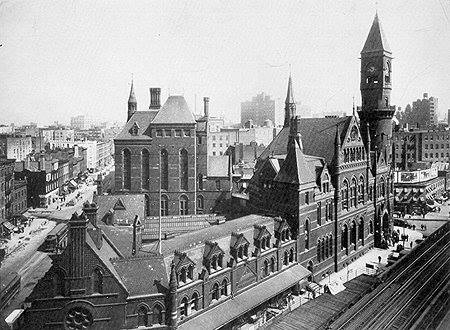April 19, 1929: Outrageous as the April 15th raid on the Birth Control Clinical Research Bureau may have been, it was quite gratifying to see that it caused 500 people to come to the Jefferson Market Courthouse in Greenwich Village this morning to show their support for the two doctors and three nurses who were arrested.

Defense committees composed of prominent individuals have been formed in both New York and New Jersey, and the sight of so many well-known and well-respected individuals filling the seats in the courtroom shows how far the movement to fully decriminalize birth control has come in just over a decade and a half. This kind of outpouring of support certainly bodes well for the future of the cause.
Today’s preliminary hearing was quite brief, lasting only about 40 minutes. But it was long enough to hear from police officer Anna K. McNamara, who gathered the “evidence” for the arrests. McNamara testified that on orders from Mary Sullivan, director of the New York Police Department’s Women’s Bureau, she made three visits to the clinic seeking information on birth control. She admitted that she gave the clinic personnel a false story so they would believe she could legally be seeking such advice. That belief, and clinic policy, was based on a decision by Judge Frederick Crane in 1918. Though he upheld New York State’s law making it a criminal offense to distribute birth control devices and contraceptive information, he said that the law must make a narrow exception for licensed physicians giving contraceptive advice to their married patients “for the cure or prevention of disease.” Condoms would certainly be considered a means of preventing disease, and other methods of contraception would also qualify if a woman’s health would be endangered by a pregnancy.
As Morris L. Ernst, attorney for the five women put it: “If the doctor is acting in good faith with the thought that the birth control information will prevent disease, that is all we have to prove. It is the burden of the prosecution to prove bad faith of the doctor.”
Though a crowded court calendar prevented him from having time to hear more witnesses today, Magistrate Rosenbluth indicated great interest in the case, especially in regard to carefully examining the legality of all the warrants issued, and hearing more about the overzealous methods used in the raid. He seemed especially troubled by the confiscation of confidential patient records, which are the private property of the doctors. Assistant District Attorney John Hogan seemed aware that this violation of privacy was totally out of line, and promised that all the records would be returned to the clinic.
Everyone is eager to hear from Mary Sullivan, not present today, to find out whether the undercover operation and raid were actions that she initiated on her own, or if she was only following orders from someone higher up, and if there were outside forces pressuring the police to make the raid.
The reason for the raid is still a mystery. The Birth Control Clinical Research Bureau has been operating legally and openly – though quietly – since 1923, and has always been very careful to have only responsible, licensed physicians give contraceptive advice to those whose circumstances conformed to the criteria set down by Judge Crane.
It has been a decade since entrapment, raids, and jail sentences were commonly used against birth control advocates, so some as yet unknown factor triggered this assault on the clinic. It is hoped that five days from now, when the women face trial, vigorous questioning by defense attorneys of everyone involved in the raid will bring out its instigators and their motives, followed by a quick acquittal of all defendants.





